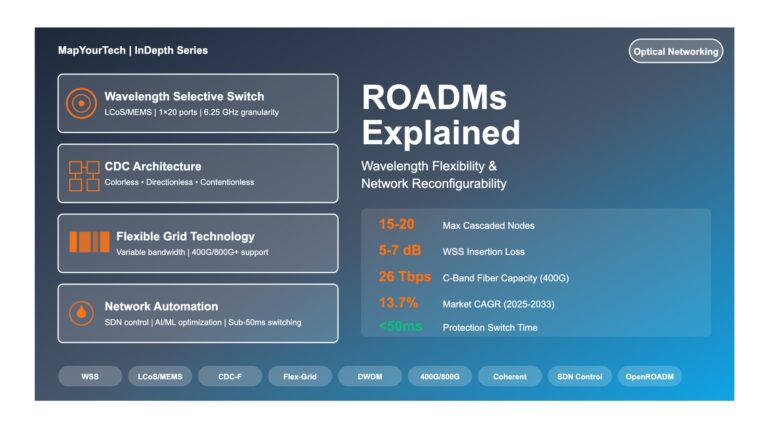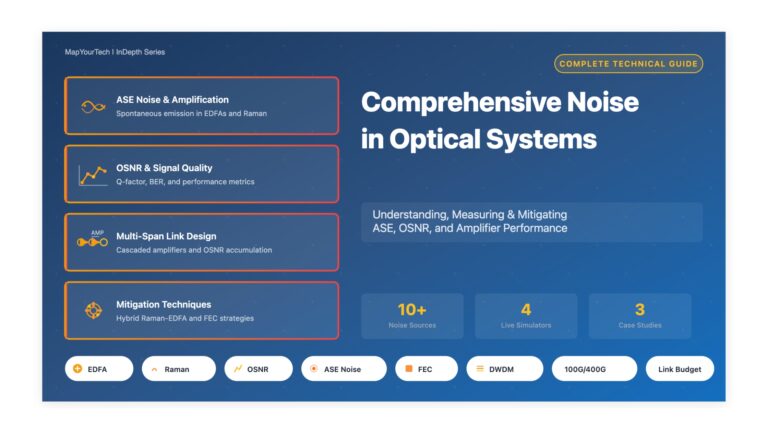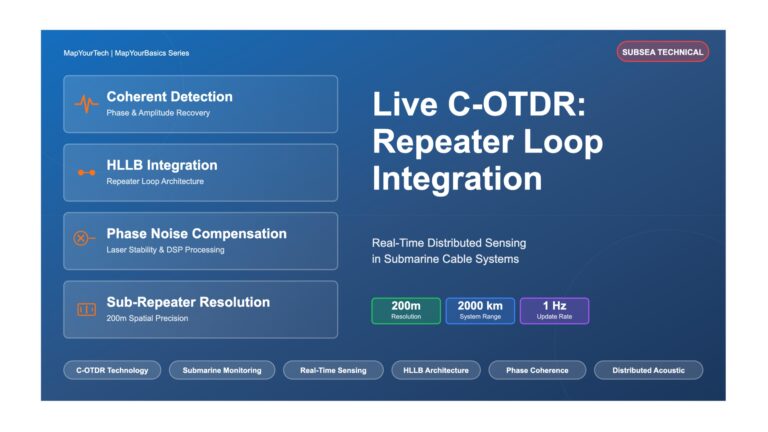Major Noise sources of Raman Amplifiers are:
- Amplified spontaneous emissions (ASE)
- Double Rayleigh scattering (DRS)
- Pump laser noise.
ASE noise is due to photon generation by spontaneous Raman scattering.DRS noise occurs when twice reflected signal power due to Rayleigh scattering is amplified and interferes with the original signal as crosstalk noise. The strongest reflections occur from connectors and bad splices. Typically, DRS noise is less than ASE noise, but for multiple Raman spans it can add up. To reduce this interference, ultra-polish connectors (UPC) or angle polish (APC) connectors can be used. Optical isolators can be installed after the laser diodes to reduce reflections into the laser. Also span OTDR traces can help locate high-reflective events for repair.
Counter pump DRA configuration results in better OSNR performance for signal gains of 15 dB and greater. Pump laser noise is less of a concern because it usually is quite low with RIN of better than 160 dB/Hz.
Nonlinear Kerr effects can also contribute to noise due to the high laser pump power. For fibers with low DRS noise, the Raman noise figure due to ASE is much better than the EDFA noise figure. Typically, the Raman noise figure is –2 to 0 dB, which is about 6 dB better than the EDFA noise figure.
Raman amplifier noise factor is defined as the OSNR at the input of the amplifier to the OSNR at the output of the amplifier.
An undesirable feature is that the Raman gain is somewhat polarization sensitive. In general, the gain is maximum when the signal and pump are polarized along the same direction but is reduced when they are orthogonally polarized.
Unlock Premium Content
Join over 400K+ optical network professionals worldwide. Access premium courses, advanced engineering tools, and exclusive industry insights.
Already have an account? Log in here



